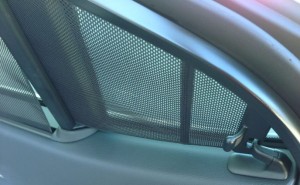The Road Code contains nothing about driving in hot weather, only a small section on driving in bad conditions (fog, heavy rain, etc). However, hot weather can be as treacherous. This article explains all the risks of driving in hot weather so that you are prepared this summer.
Sunstrike
Drivers are subjected to blinding sun driving east at sunrise or west at sunset. This causes sunstrike or sun dazzle, especially if your windows or visor aren’t clean. A scratched helmet visor will also cause difficulties with visibility for bikes.
Slippery and soft surfaces
Hot weather can melt tarmac which then becomes slippery. It can also splash your vehicle. You can buy products to remove tar splashes from paintwork.
When there’s been a period of dry weather for a few days, a layer of oil, dust and grime builds up on the road. While it remains dry, this isn’t slippery, but as soon as it rains, this becomes slick until the rain has had a chance to wash it away.
Skin cancer and sunburn
Hot weather means you are more likely to have your vehicle windows open. As well as the possibility of developing ‘trucker’s arm’ (one arm is more tanned than the other), it increases your risk of melanoma if you don’t take adequate protection against the sun as you could easily get sunburned.
If you ride a motorbike, there’s the temptation to wear less protective clothing because it will be hot. This puts you at greater risk if you have an accident.
Carrying pets
Pets should never be left in a parked vehicle if the temperature is any hotter than in the mid-teens Celsius. Dogs can’t sweat – they have to pant to lose heat – but the temperature in a car can quickly rise to 50-60 degrees in hot weather. Leaving the window down isn’t an option. Take them with you when you go.
Carrying children
 Children can also suffer heatstroke if you leave them in the car unattended in hot weather. Take them with you when you go. When travelling you can have window shades to keep the sun off them. Some cars come with built-in window shades.
Children can also suffer heatstroke if you leave them in the car unattended in hot weather. Take them with you when you go. When travelling you can have window shades to keep the sun off them. Some cars come with built-in window shades.
Children’s more sensitive skin can be burned easily on hot surfaces. Black vinyl and leather seats can climb to extremely high temperatures. If your car has black leather seats and doesn’t have privacy glass or tinted windows you can use a towel to cover the seats to keep them cooler.
Air conditioning and ventilation
Use your air conditioning fairly frequently, even during winter (for example, to help clear fogged windows quickly), and it will need less servicing.
Overheating
Vehicles are slightly more likely to overheat in hot weather, although this shouldn’t affect modern vehicles unless there’s something mechanically wrong with them. If you do have to stop on the side of the road make sure you’ve got enough water for you.
Dehydration
On a hot day you will become dehydrated more quickly. Dehydration leads to diminished concentration, which will increase your risk of an accident. Make sure you carry water or another drink that’s not a diuretic. A diuretic causes you to lose water; caffeinated drinks such as coffee and Coke are diuretics. Motorcyclists with protective clothing should pay particular attention to this as you will be sweating more. Read our article on dehydration here.

